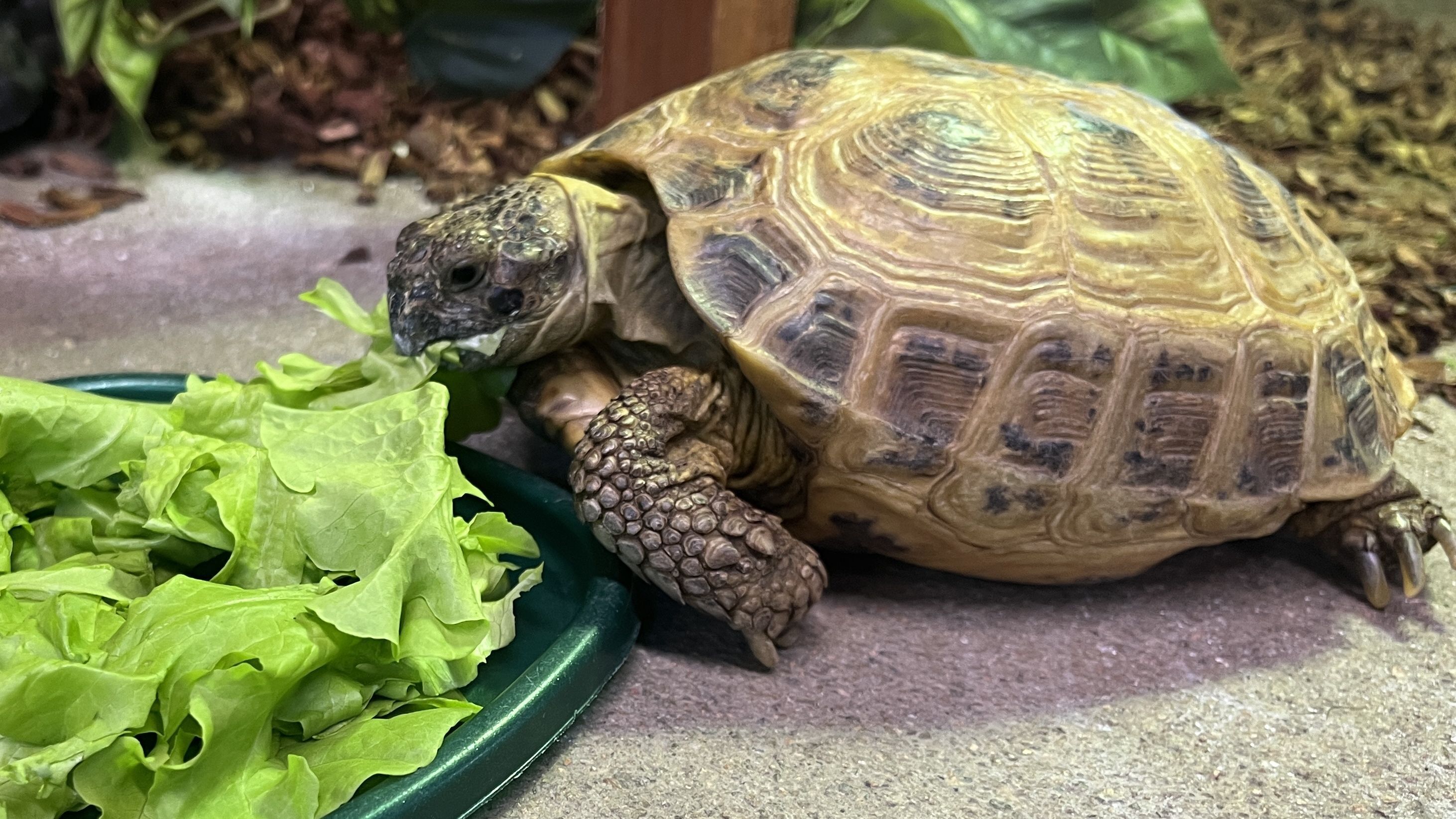
Anyone who has ever had or taken care of an amphibian or reptile can surely attest to the complexities of their care. There are many considerations when it comes to housing them, which often evolve over time as they age and their state of health changes. They may need more space, prefer certain substrates, need more or less heat and humidity management depending on where their species is from versus where they are currently housed. Evaluating diet is an important aspect of husbandry and can be prone to frequent changes as the animals age. Because there are so many factors that can influence behavior, it is really important to be vigilant to changes.
At Zoology, we track our ectotherm’s behaviors and diets daily. We know exactly what they were offered how much they actually ate. So, when Molly the Russian tortoise had an appetite change, it was quickly noted and tracked.
When Molly first arrived at Zoology two years ago, she was a salad eating machine! She was also incredibly active, spending her days walking around the turtle house and exploring the reptile sunning yard when it was her turn for some real UV time. And so when Molly started to slow down both her eating and her activity level, we had an accurate timeline for when the changes began. What was difficult however, was figuring out what the origin of the changes were. So we became detectives.
There was a seasonal cooling as it was Winter so it could have been seasonal, but we didn’t want to shrug it off that easily. It was also noted that her body condition was on the heavier side. Once this had been corroborated by her veterinarian, we took a look at her diet. We had been feeding her a diet of primarily greens, with a small amount of veggies sprinkled on top. Following the suggestions provided by her veterinarian, we decreased the amount of veggies to only occasional (as a treat) and actually increased how frequently she was getting her greens, though the amount was slightly decreased. Within about a month, Molly was back to demolishing her salads and maintained a healthy activity level, indicating that she was getting enough food of the right kind.
It is quite common for reptiles to get a bit overweight in captivity since they do not have to hunt or forage for their meals every day. In Molly’s case, she is a species of tortoise that lives in desert environments, so feeding her veggies too frequently had caused her to gain a lot of weight. Two major signs of a reptile being overweight are lower activity levels and a decreased appetite, both signs Molly was exhibiting. In Molly’s case, the change in appetite could be a of being fed getting too much, which can sound counterintuitive.
The “why” can be harder to figure out in other cases, however. Changes in appetite can be a sign of a health concern, but can also be caused by aging or run-of-the-mill pickiness. Taking all factors into account, such as age, activity level, and environmental factors, changing up what they’re being offered as well as working closely with your vet to discern the cause is a great way to quickly and effectively address appetite changes in your ectotherms, or any pet for that matter!

